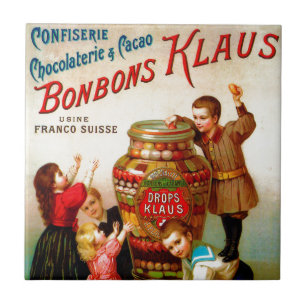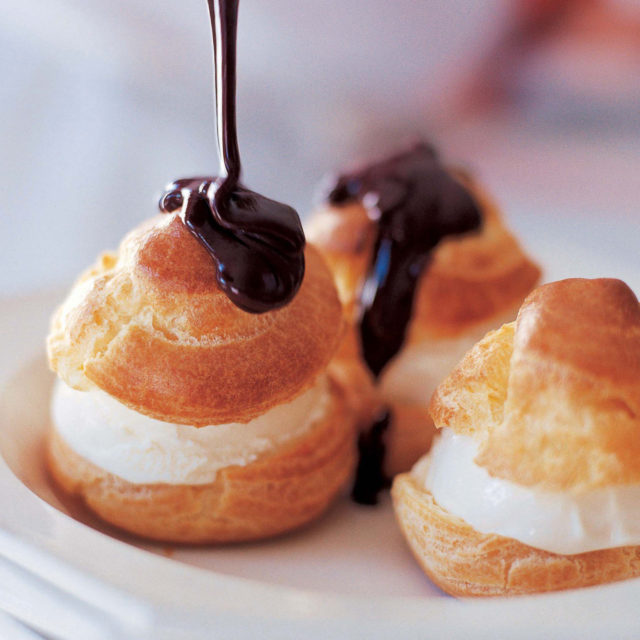Cooking & Baking
Related: About this forum'A Cultural History of Sugar: From Status Symbol to Sweet Poison'
'From status symbol to sweet poison: A cultural history of sugar.' How did pies become cakes and what do pharmacists have to do with candy? A new exhibition explores the rise and fall of the reputation of this omnipresent ingredient. DW/Deutsche Welle, July 29, 2019.
Sweets for the kids, chocolate for heartbreak, ice cream during lunch break: We love sugar in every form — and the industry loves it too. Whether in bread, baby food, yogurt or sauces, sugar is present in just about everything we eat. The average German consumes more than 30 kilos (66 pounds) of the white crystal a year. The times when possessing it was a sign of wealth and power are most certainly over; today it's notorious as something bad for our health and that makes us gain weight.

In the beginning there was fruit: Like almost everything else, sugar had to come to Europe before the craving could be developed there. But how did Europeans satisfy their desire for sweet treats before merchants brought sugar to the continent? Two thousand years ago, fruit was the only source of sweetness. The Romans started growing it in Germany, and from then on, a wide variety of fruits, from apples and pears to plums and grapes, continued to be planted. The extracted and preserved fruit juice was processed into mush or jelly.
"It was durable and could be used to sweeten food," explains Carl Pause, an archaeologist who curated the exhibition "Sweet stuff: Snacking in Neuss" at the Clemens Sels Museum in the German city of Neuss, located next to Düsseldorf.
The extraction of sugar from sugar cane began in the early Middle Ages, imported to Europe from the Middle East. However, it was too expensive for the general population, says Pause. Even the nobility could only afford it for special occasions. Legend has it that the name of the famous candy, bonbon, originated at these very festivals. After testing the sugar mixture for the first time, French royal children were said to have replied enthusiastically, "Bon! Bon! (French for 'good'), giving the candy its name.

- Cane sugar came to Europe from the Middle East and was very expensive.
The sweet revolution: In the 18th century, the British began to cultivate sugar cane in their colonies, producing sugar in large quantities. France led a war against Britain under Emperor Napoleon who "wanted to prevent the British from doing business," says Pause. Thus, the so-called Continental Blockade put a stop to sugar imports. The war was long over and Napoleon dead for years when sugar beet finally made it to Germany in the middle of the 19th century. From then on, sugar was available to everyone and — above all — affordable.
A source of energy: Today, an excess of sugar is regarded as "white poison" and linked to numerous diseases. This makes it all the more surprising that since ancient times, it was found where it might be least expected: in pharmacies.

- Medicine bottles. Sugar was said to have healing properties and was once used in medicines available at pharmacies.
As early as the first century A.D., sugar was said to have healing properties. In the 12th century, drugs called "sine confectiones" consisted of 90 percent sugar. Five hundred years later, however, pharmacists used sugar in medicines mainly for preserving and correcting the bitter taste and as a source of energy. The sweet medicine sold well. Eventually, in order to boost sales, pharmacists simply left out the active medical ingredients, selling only the sweet food — and the confectionery was born.
> German specialty, Black Forest Cake, https://www.dw.com/en/german-specialty-black-forest-cake/a-38879304

- Black forest cherry cake is one of the most popular cakes in Germany.
How pies became cakes: After the confection left the pharmacy, it did not take long for the range of sweets to widen. Cake was one sweet treat that eventually became popular. With its airy sponge cake base, sweet cream and plenty of cherries, the Black Forest cherry cake became one of the most popular cakes in Germany.
Although it celebrated its 100th birthday in 2015, the forerunners of this baked product existed as far back as the 16th century. However, the cakes of that time did not have much to do with our current understanding of what form the Black Forest cake takes. Several hundred years ago, they looked quite different....
More, https://www.dw.com/en/from-status-symbol-to-sweet-poison-a-cultural-history-of-sugar/a-49789645

TygrBright
(20,762 posts)Honeybees have been around WAY longer, and apiary culture goes back longer than 2000 years.
baffledly,
Bright
appalachiablue
(41,146 posts)that SUGAR= plant- based 'cane sugar' is distinguished from HONEY= 'honey,' made by bees and other insects which is interesting. So both are 'sweeteners,' but 'sugar' means cane plant-grown, to me.
(Wiki). Sugar was first produced from sugarcane plants in northern India sometime after the first century CE. The derivation of the word “sugar” is thought to be from Sanskrit शर्करा ('śarkarā'), meaning 'ground or candied sugar,' originally 'grit, gravel'. Sanskrit literature from ancient India, written between 1500 - 500 B.C. provides[citation needed] the first documentation[citation needed] of the cultivation of sugar cane and of the manufacture of sugar in the Bengal region of the Indian subcontinent. The Sanskrit name for a crudely made sugar substance was guda, meaning “to make into a ball or to conglomerate.”
...4.The spread of cultivation and manufacture of cane sugar to the West Indies and tropical parts of the Americas beginning in the 16th century, followed by more intensive improvements in production in the 17th through 19th centuries in that part of the world.
5.The development of beet sugar, high fructose corn syrup and other sweeteners in the 19th and 20th centuries.
Known worldwide by the end of the medieval period, sugar was very expensive and was considered a "fine spice", but from about the year 1500, technological improvements and New World sources began turning it into a much cheaper bulk commodity. https://en.wikipedia.org/wiki/History_of_sugar
(A Brief History of Honey) Honey continued to be of importance in Europe until the Renaissance, when the arrival of sugar from further afield meant honey was used less. By the seventeenth century sugar was being used regularly as a sweetener and honey was used even less. As bees were thought to have special powers, they were often used as emblems..http://www.honeyassociation.com/about-honey/history
eppur_se_muova
(36,269 posts)appalachiablue
(41,146 posts)trade history and labor, almost entirely African slaves, of the sugar industry in the Americas. I've seen cane fields, machinery, windmills and plantation remnants for the sugar and rum industries in the Caribbean and Brazil.
NJCher
(35,687 posts)Last edited Mon Jul 29, 2019, 06:30 PM - Edit history (1)
So cakes once looked like pies because they couldn't put cream in them.
That was an interesting story, so thanks for posting it, AppalachiaBlue. I loved the illustrations. Sugar is beautiful in all its many forms.
During the RG's long career in gourmet specialty foods in the U.S., he once built a national brand for an Italian dessert company. He did that for something like nine years. I thought I'd died and gone to heaven because there was always a new treat from their extensive dessert line. There was tiramisu, apple cakes, all kinds of fruit tortes. Gelato, sorbetto. Filled fruits, like filled lemons. Profiteroles. The best part was that these were all frozen desserts, and the company had a proprietary way of freezing them so you would never know they were frozen. It meant we could keep a dessert in the freezer and not worry about them going bad. These desserts are sold in restaurants across the country.

appalachiablue
(41,146 posts)what a terrific confection! Only had them once on a French Caribbean island.

